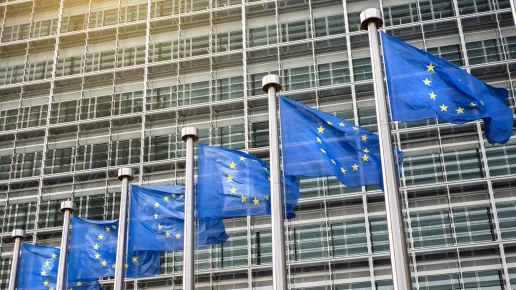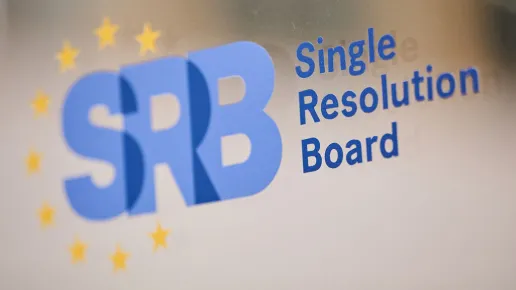The Common Backstop to the Single Resolution Fund was agreed in principle by Member States in 2013 and will enhance the credibility of the resolution framework in the Banking Union. The ESM was agreed as the provider of the Common Backstop by the Euro Summit in June 2018.
The Common Backstop would be available only as a last resort and, in case of use, it would be repaid by the Banking Sector.
It is important that the Common Backstop’s design provides for rapid and effect decision-making by the ESM and aligns to the resolution objectives. Over-complexity should be avoided.
Introduction
One of the biggest changes demanded by policy makers and politicians in the wake of the financial crisis ten years ago was to address the moral hazard of “too-big-to-fail” banks and find a way to deal with failing systemic banks without widespread spill-over effects to the financial system, the economy and public finances, and without the taxpayer having to foot the bill. In Europe, there was clear agreement that the bail-outs of the last decade, with the use of public funds, had to be consigned to history. Thus, the principle of “resolving” systemically important banks with a “bail-in” instead of a “bail-out” was put into legislation and can now be applied in practice[1]. This term covers the way we deal with failing banks today.
Creation of the Banking Union
In the EU, new rules on the recovery and resolution of banks were agreed. For the Banking Union, the Single Supervisory Mechanism (SSM) and the Single Resolution Mechanism (SRM) have been established, with the Single Resolution Board (SRB) created as the supranational resolution authority in the Banking Union. The Banking Union currently covers the 19 Eurozone countries, but it is also open to other Member States of the EU.
Importantly, different resolution tools were created to address bank failures, and the Single Resolution Fund (SRF) was created to ensure the effective application of resolution actions by the SRB, where necessary and subject to strict criteria. The SRF is funded through ex-ante contributions (i.e. contributions collected annually in advance) from the banking sector, ensuring that the cost of failures will be borne by existing creditors and the banking sector. The SRF now holds 24.9bn euro and it is being built up over a period of 8 years to 1% of covered deposits (an amount close to 60bn euro based on recent projections)[2]. To further strengthen the Banking Union, Member States agreed in 2013, and further in 2016 to develop a Common Backstop (the “Backstop”) to the SRF which should become operational by the latest at the end of the transitional period, i.e. end 2023.
Why is the Backstop so important?
Market confidence in a time of crisis is key. For credibility, the existence of a Backstop to the SRF is crucial, in particular for situations where the SRF might not be able to provide sufficient funds or those financial means are not readily available. It is to be used only as a last resort and it will ensure the SRB will always have access to sufficient funds to address even a severe systemic crisis and thereby secure financial stability when this is most needed. Indeed, the Backstop’s very existence would boost confidence in markets in a time of crisis, and therefore the need to actually use such a Backstop could be greatly reduced. The Backstop also ensures a level playing field with other jurisdictions that already have put in place a similar mechanism.
Recently, the Euro Area Member States agreed that the Backstop would be provided by the European Stability Mechanism (‘ESM’), for which the size would be aligned to the target level of the SRF.
Fiscally-neutral for the taxpayer
The Backstop will be provided by the ESM in form of a credit line and its design will ensure that last resort funding will be available for the SRF. The Backstop will not be a burden on the public purse, because in the medium term the banking sector will cover the cost of any Backstop use, via contributions collected afterwards (via ex-post contributions) ensuring fiscal neutrality.
How should the Backstop function?
Access to the Backstop should be aligned with the rules for the use of the SRF to take full advantage of synergies with the existing framework. The SRM Regulation already sets out a series of conditions, which materially limit the risk to which the SRF and thereby the Backstop could be exposed. A contribution from the SRF to recapitalisation may only be made under two key conditions: the bail-in of at least 8% of total liabilities including own funds (TLOF), and a contribution of a maximum of 5% of TLOF. Furthermore, the use of the SRF would be assessed by the Commission to ensure it complies with State aid rules. Additional conditions are not needed to protect taxpayers. To meet these objectives, the SRB, as an independent European Union Agency, works closely with the National Resolution Authorities (NRAs), the Commission and the SSM.
Before the SRB adopts a resolution scheme involving use of the Backstop, it needs confirmation from the ESM that funds from the Backstop would be provided. The use of the SRF and thus also the Backstop by the SRB would always have to be included in the resolution scheme. Clarity around the framework is therefore necessary for the SRB to ensure that it will have an understanding of whether it will be able to access the Backstop for a given resolution case. Furthermore, particularly in a crisis situation, the possibility for conflicts between the SRB and the ESM on questions related to the resolution scheme have to be reduced to a minimum, not only in view of time constraints, but also to allow the SRB to perform its tasks as the resolution authority in the Banking Union, ensuring an orderly resolution in the interest of financial stability and managing a mutualised fund provided for by all banks of the Banking Union.
State of Play
Discussions are ongoing on the end state of the Backstop, but consideration has also been given to an early introduction of the Backstop before 2023. For the SRB, it is important that any early introduction avoids an over-complicated interaction with the current non-mutualised arrangements. Therefore, if Member States wish to press ahead and implement the Backstop early, then it might be considered to bring forward the full mutualisation of the SRF once the vast majority of funds are mutualised.
Conclusions
Implementing the Backstop and moving towards completion of the Banking Union will further enhance the credibility of the SRB as the resolution authority in the Banking Union. The Backstop will further strengthen the SRB’s resolution actions to ensure financial stability, and minimise the damage that a failing bank could cause to the financial system and the economy overall. It is important that we push ahead and make progress on the Backstop, ensuring it is well-designed, credible and ready to be called into action as a last resort should the need arise.
[1] In a bail-out the bank would receive support from external parties, whereas in a bail-in the bank’s creditors would be written down and converted into capital in order to recapitalise the bank.
[2] In order to provide sufficient firepower already from the start of the SRF, the participating Member States of the Banking Union have signed bilateral bridge financing agreements in form of national credit lines with the SRB, covering the respective national compartment within the SRF during the transitional period, until the SRF is fully mutualised by 1 January 2024.
Documents
Contact our communications team
Recent news

The SRB is committed to ensuring an effective, proportionate and predictable resolution framework that safeguards financial stability while...


On 19 November 2025 from 10:30 to 12:00, the SRB held a technical meeting focused on the operational guidance documents regarding banks’ communication...
Related news and press releases

Managing the Single Resolution Fund (SRF) involves balancing two critical objectives: safeguarding the fund’s value through prudent investment, while...

In times of uncertainty - whether triggered by geopolitical instability, or economic downturns - confidence in the financial system becomes more than...

The Single Resolution Board has today announced that the Single Resolution Fund’s target level remains reached at the end of 2024. “As a result, and...


